We’ve surely all thought that there must be a better way to operate gears than having a dingley dangly rear derailleur hanging off the back of our bikes and waiting for a sniper rock to catch it?
Indeed, we think we’ve detected a rise in interest in gearbox Bikes over the last year or so, but these do tend to have quite a limited number of gears.
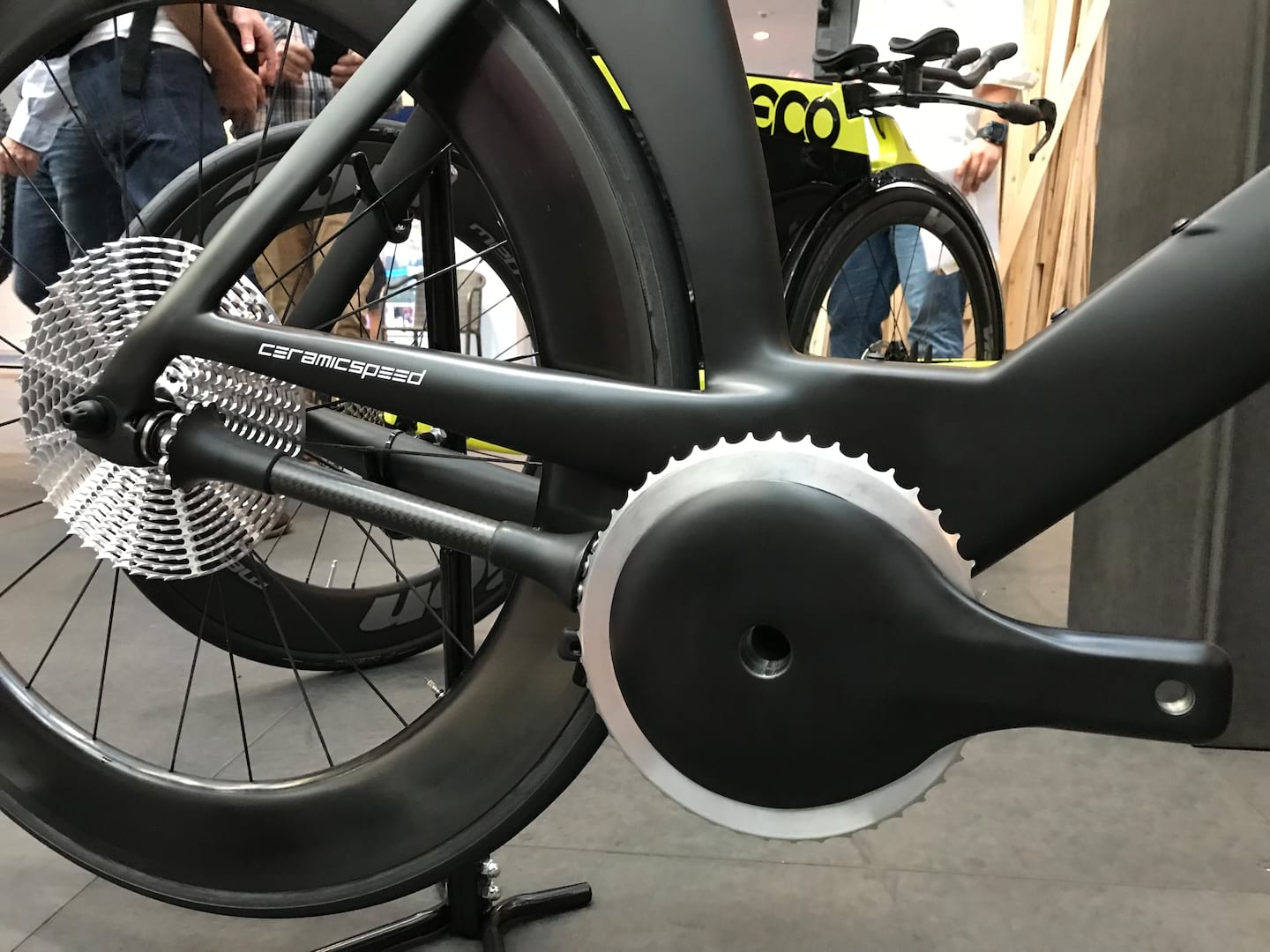
So what about this then, from Ceramicspeed? Called the Driven, it uses bearings which roll into teeth on the chainring and cassette – so there’s no chain or belt drive to create any friction. Its makers claim it is a 99% efficient system thanks to this two points of contact approach.
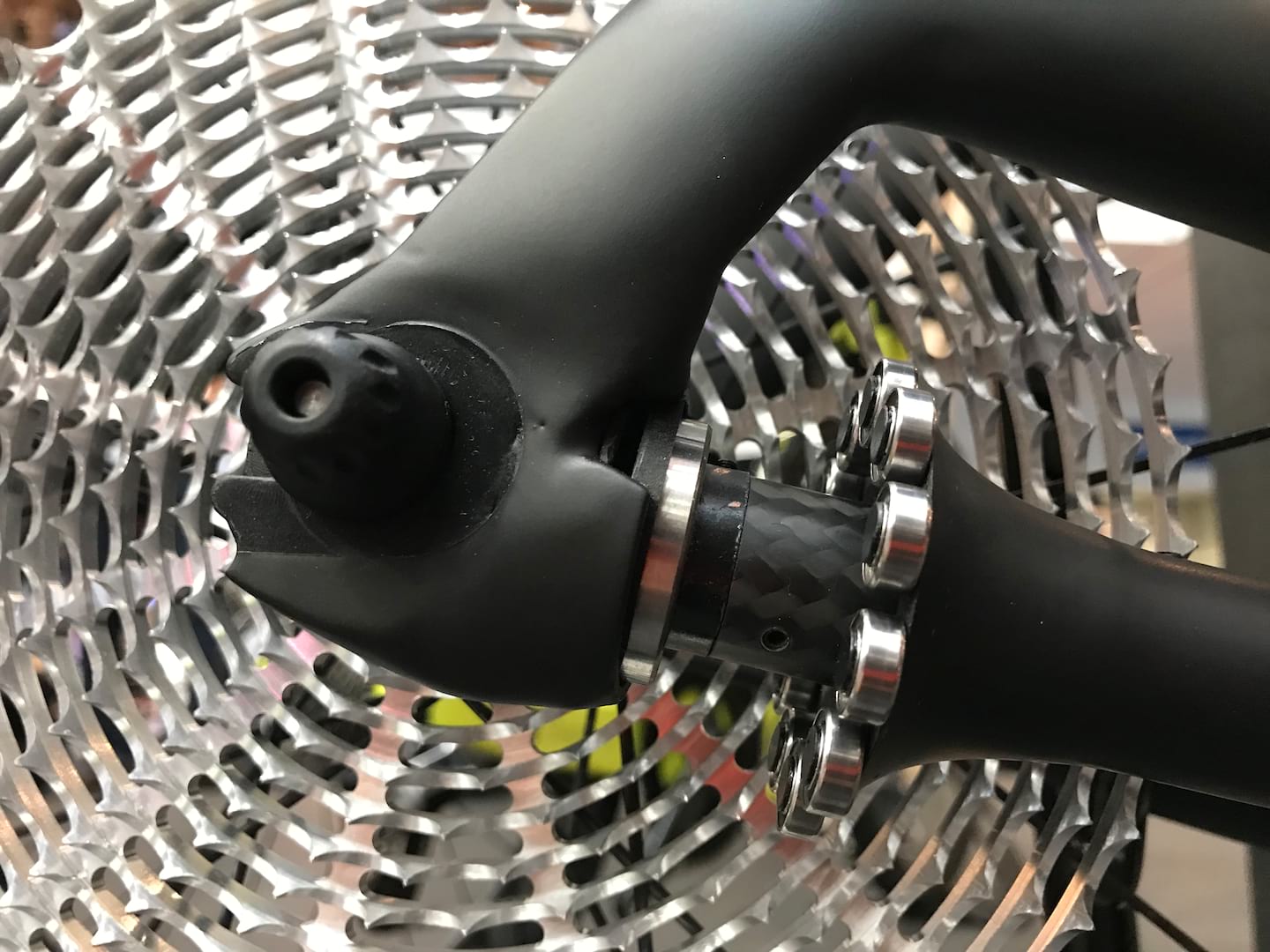
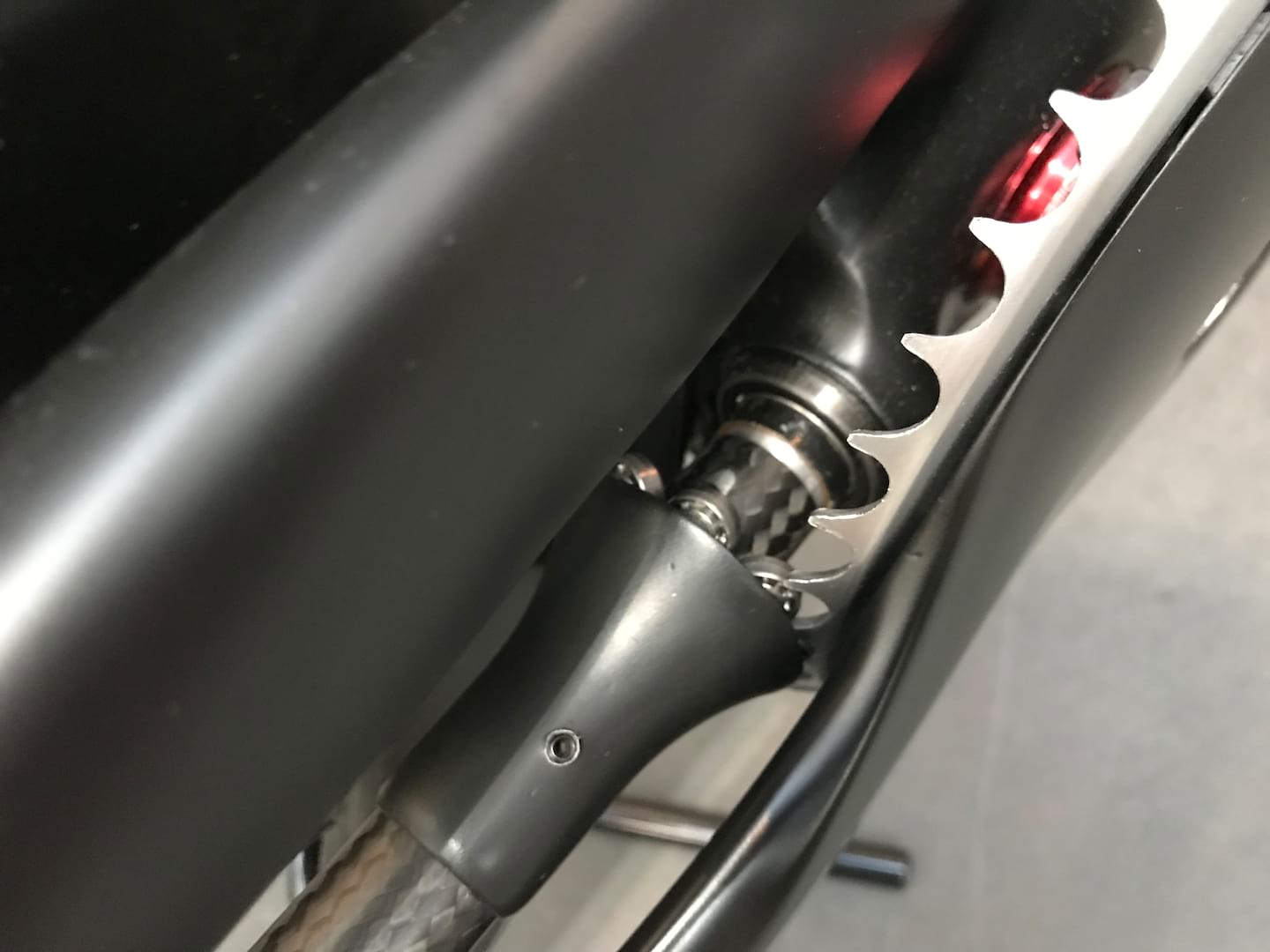
The 13 speed prototype shown here isn’t weight bearing and doesn’t actually shift between gears, which would be switched by a battery operated shaft moving the bearings up and down the shaft. Its makers says this could potentially be combined with a power meter and other telemetry.
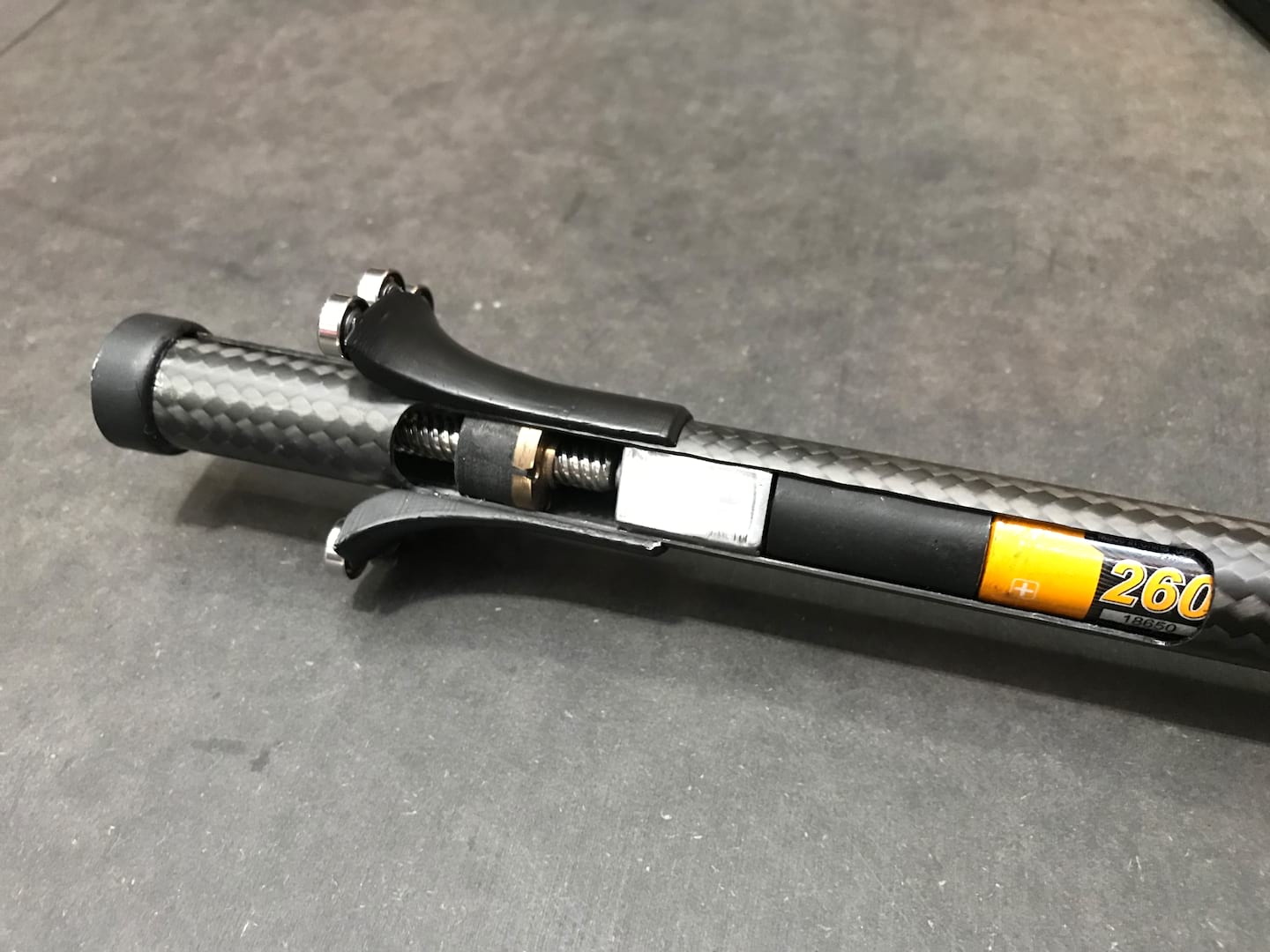
For now, there’s no plans to take this to market, and indeed this relatively small company seemed a little shocked by all the attention they were getting. They’ll likely be looking for a partnership or investor company to take this forward if it’s to become a commercial product.
Why would you want this system? Well, apart from the lack of derailleur, and the efficiency, there’s little limit on the number of gears they could have – the flat arrangement means there’s no running out of hub space. In addition, the makers think you could completely encase the whole system, keeping it away from mud and grime. They also reckon the weight could be as good or lighter than a high end road drivetrain.
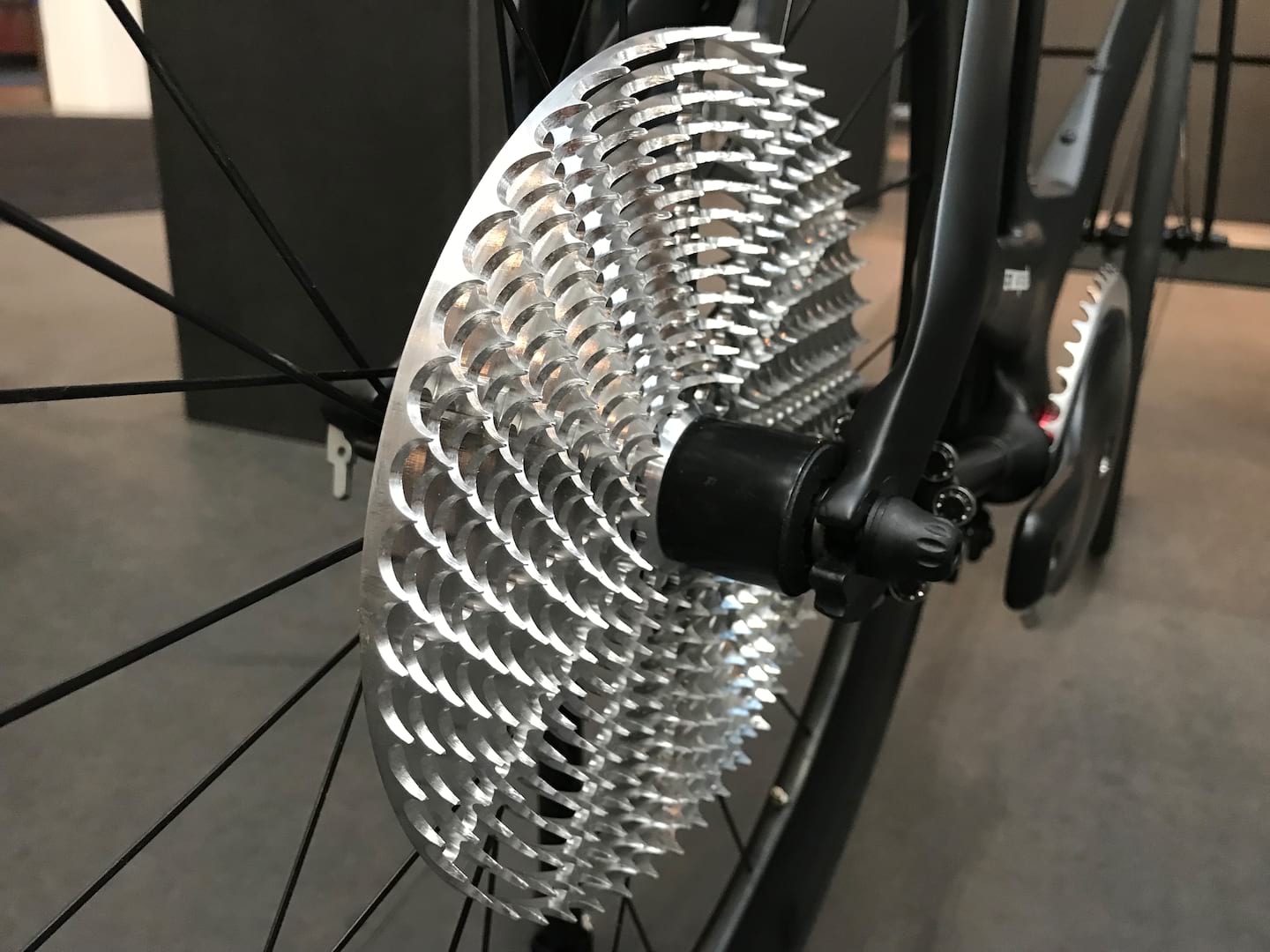
Encasing the whole things sounds to us like a very good idea, even if it were only for use in the road. Given the trouble getting disc brakes past the UCI, can you imagine the difficulty getting this giant coffee grinder meets cheese grater meets food processor approved?!
It’s a different way of seeing the world, and whether it works out or it doesn’t, it’s always interesting to see engineers looking at things from a completely different perspective instead of just tweaking round the edges.
Check out the video to see it in motion.






“When Engineers think differently”.
“Engineers” you say?
Er, no transmission engineer worth their salt would design a gear box where the primary tooth loads are resolved (or attempted to be resolved) orthagonally to the primary structural axis!
If you have no idea what that ^^ means, then you too, should not be attempting to design any transmission system either……… 😉
MT care to expand for those of us who are not transmission gurus, thanks Paul
It’s 99% efficient, according to an outfit who charge £250 for a set of jockey wheels and claim they save you 9 watts. Forgive me if I detect a slight whiff of bollocks.
The primary structural support for the transmission on a standard bike is the chainstays. With a normal transmission the chainline is working along the same plane as the chainstays. In this design the power is applied at 90 degrees to the chainstay and also 90 degrees to the input of the power at the cranks.
It also looks like the transmission would be through a really limited area of basically a single tooth on the shaft and the transmission rings.
Still it certainly has an interesting aesthetic
Rich unless I’m mistaken the shaft does not have teeth, it has roller beareings at each end to engage the chain wheel and pseudo cassette
But the bearings are engaging the teeth on the pseudo cassette, but unlike a chain, which will wrap around almost half of the sprocket the bearing are only engaging one tooth on the pseudo cassette. I can’t see how this isn’t a potential weakness
Putting what @maxtorque said into plain English: it’d rip itself apart under load.